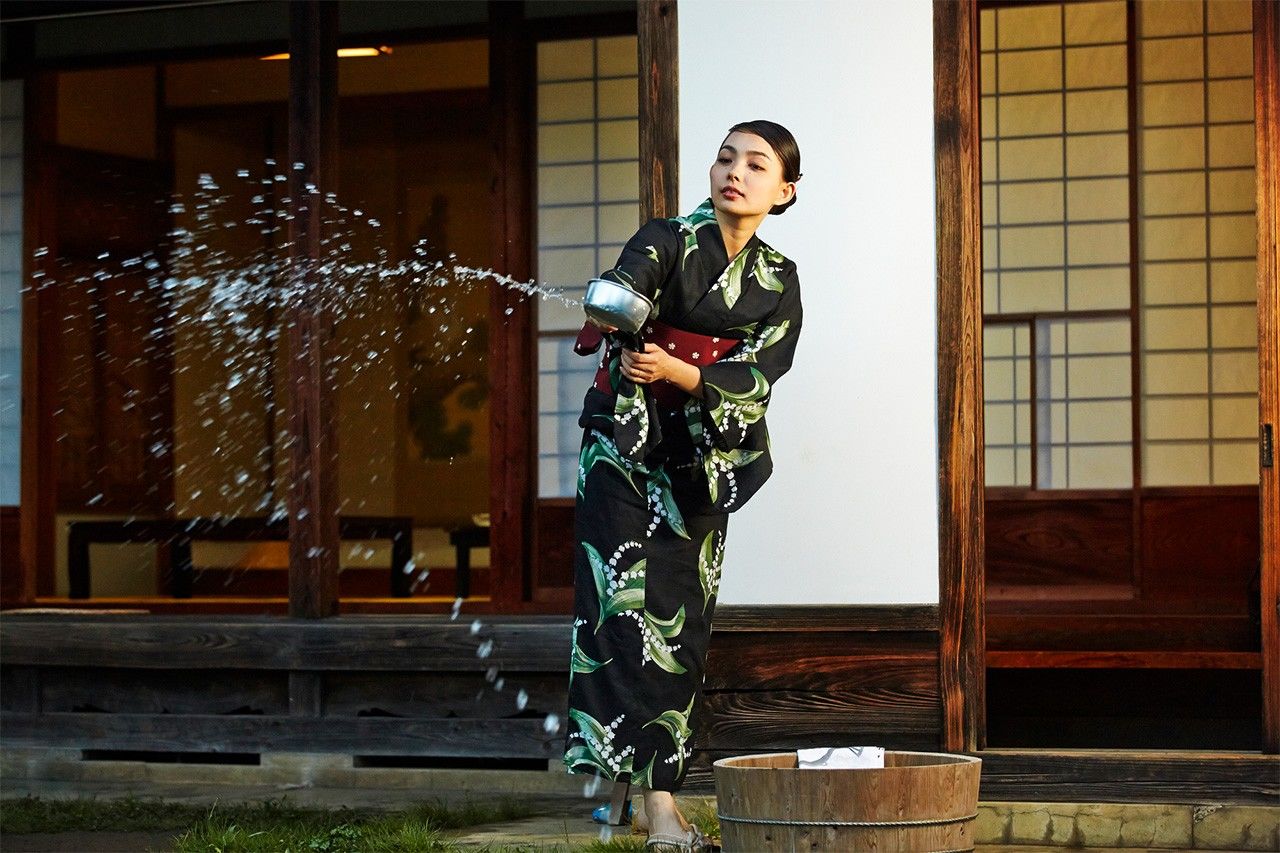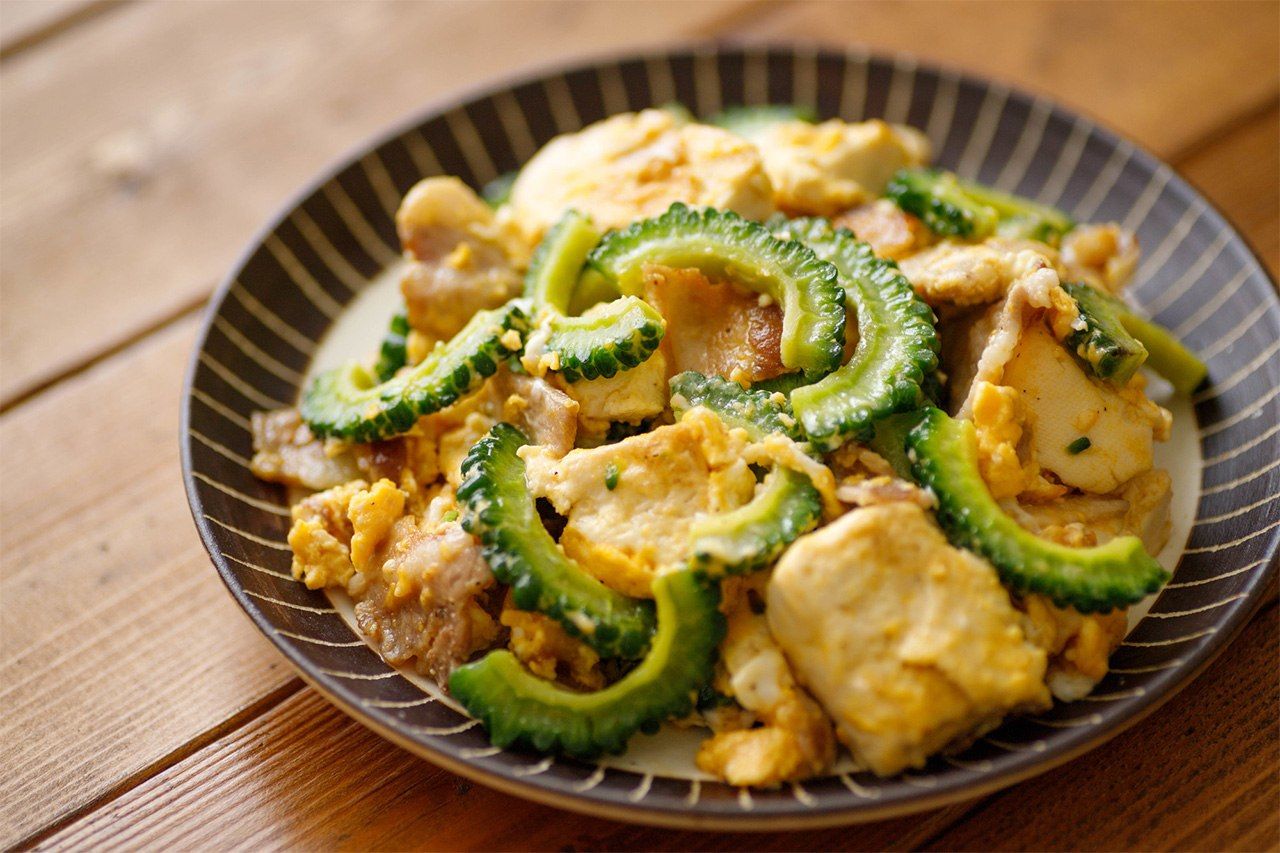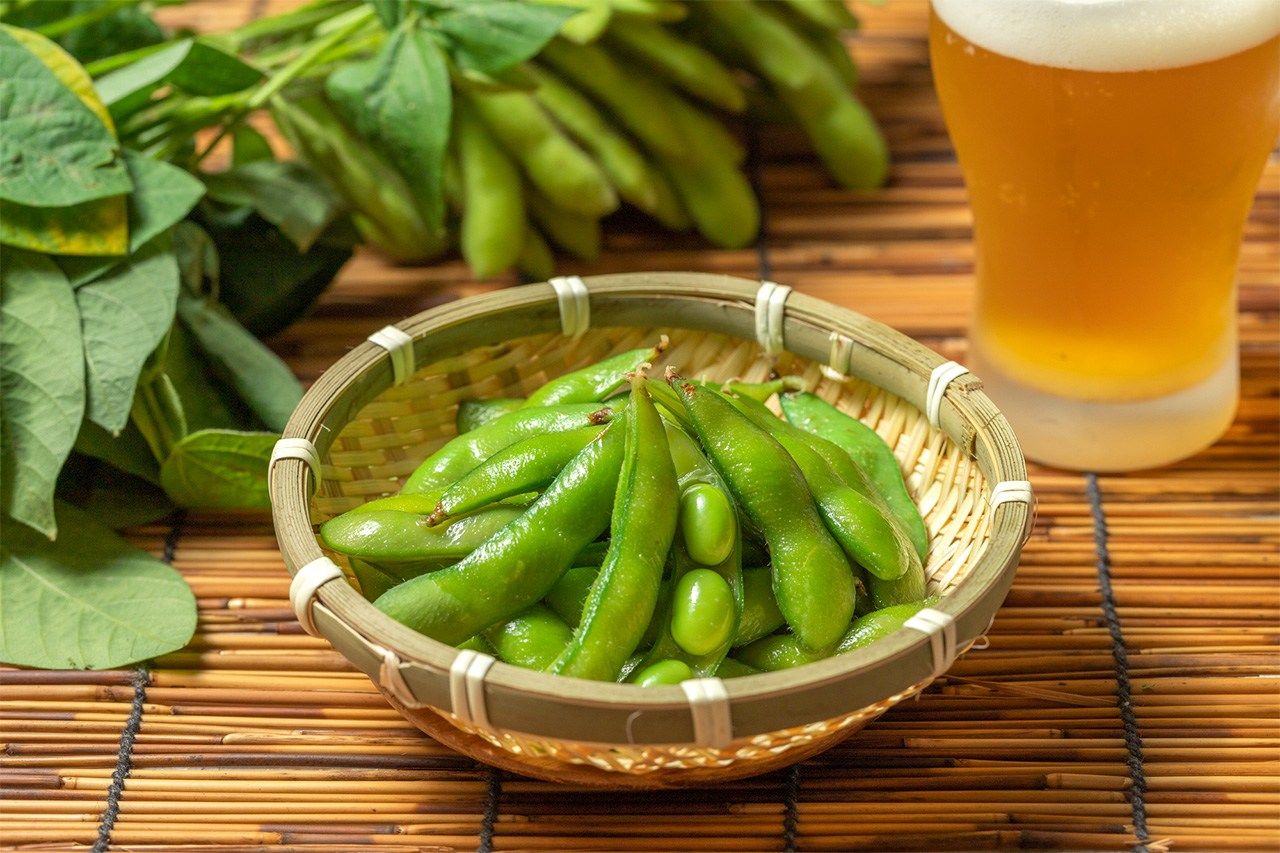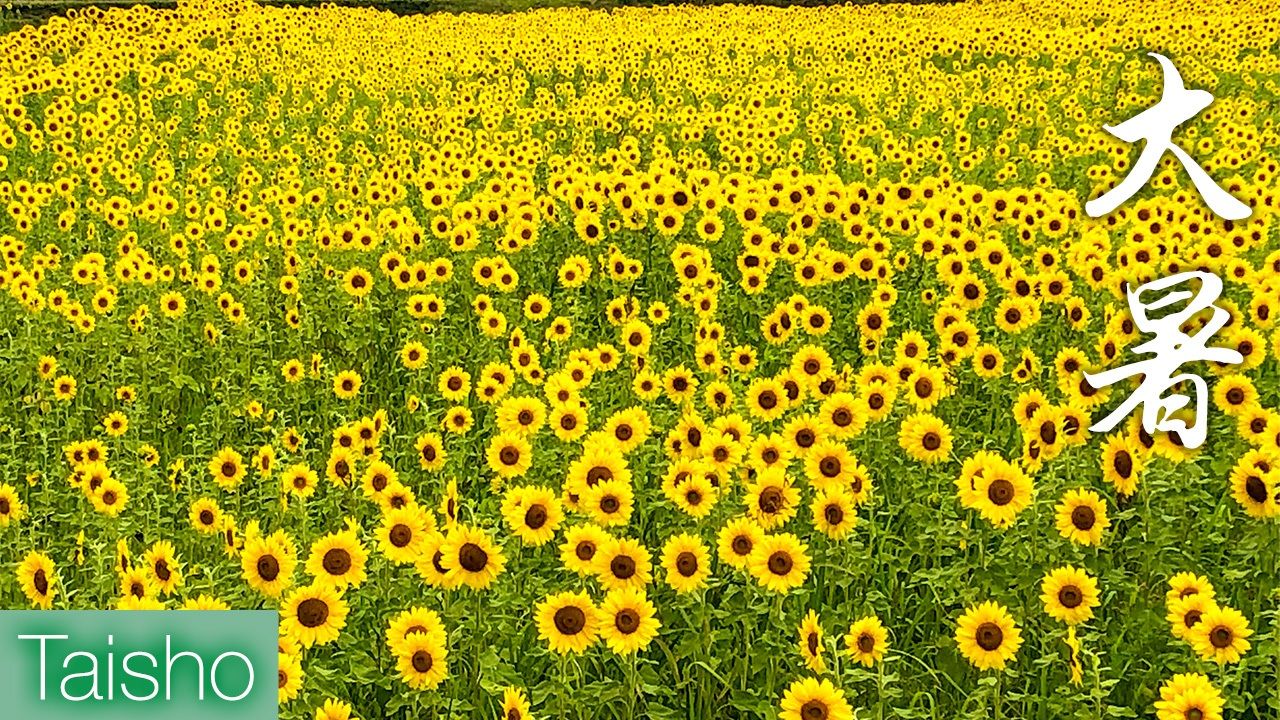
Taisho (Greater Heat)
Culture Lifestyle Environment Travel- English
- 日本語
- 简体字
- 繁體字
- Français
- Español
- العربية
- Русский
Taisho (Greater Heat), one of Japan’s 24 solar terms, denotes the hottest time of the year. In the modern calendar, it begins around July 23. For much of Japan, the heat peaks in early August. The news warns of “extreme heat days”, when the temperature rises above 35°C, and “tropical nights,” when the temperature does not fall below 25°C.
This article will look at events and natural phenomena in the period roughly from July 23 to August 7.
Shochū-mimai
These are summer greeting cards people send to others they rarely meet or who they are indebted to, such as teachers. Shochū-mimai are traditionally sent between Shōsho (Lesser Heat) and the official beginning of autumn (around August 8). Greetings cards sent later than this are called zanshō-mimai. (Shochū means the “height of summer” and zanshō “lingering heat.”
Sumida River Fireworks Festival (last Saturday in July)
This is the oldest fireworks festival in Japan. Tokugawa Yoshimune staged fireworks as part of a festival of Suijin, the Shintō god of water, in 1734, following the Great Famine of 1733, to pray for the repose of the dead. The fireworks marked the start of boating season on Ryōgoku (now Sumida) River, and the sound and smoke were believed to ward off vengeful ghosts and comfort the spirits. Pleasure boats known as yakatabune are a great way to enjoy unobstructed views of the fireworks, although they are expensive.
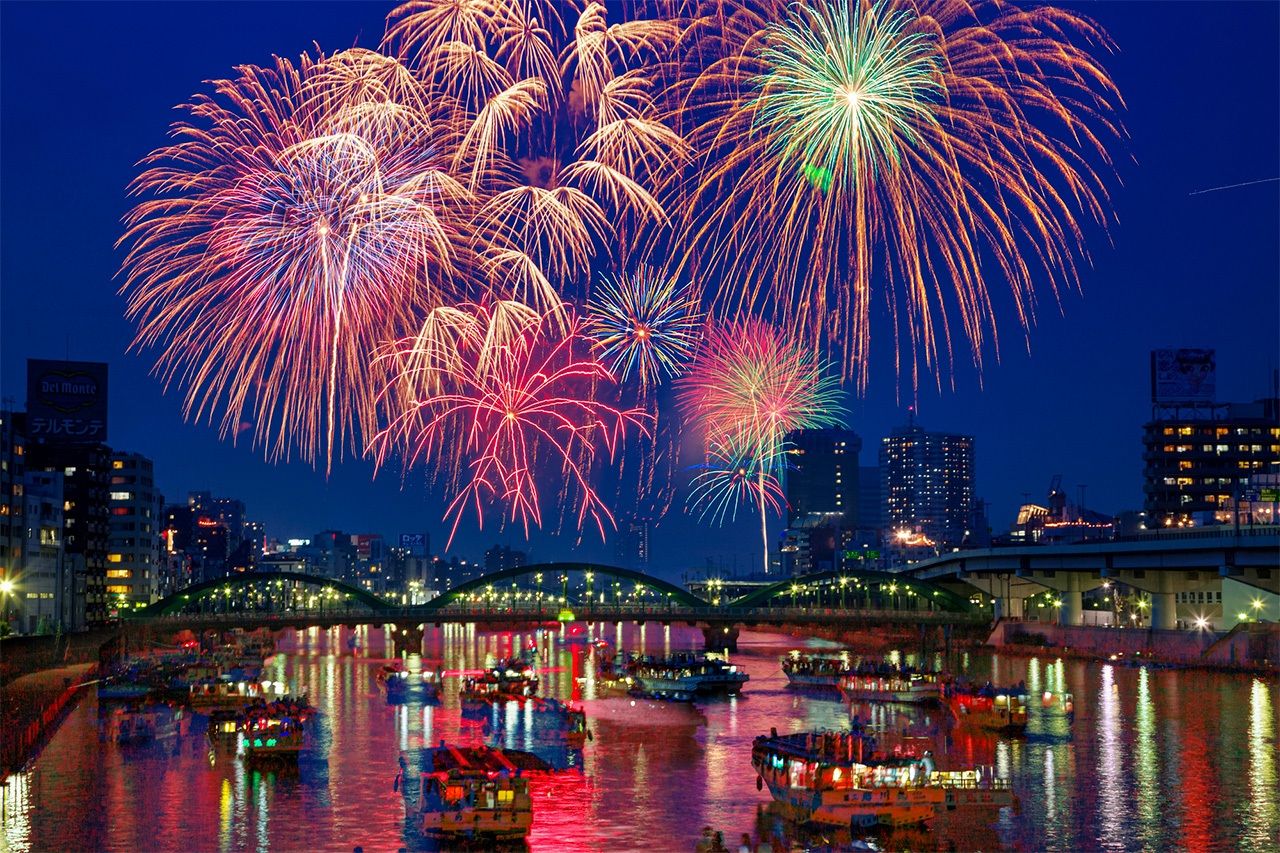
Yakatabune and the Sumida River Fireworks Festival. (© Pixta)
Rhinoceros Beetles and Stag Beetles
Both these insects are popular with children and the young at heart in summer. Male rhinoceros beetles have long horns on their heads and bodies, and the Japanese name, kabutomushi, refers to the kabuto (helmet) of ancient warriors. Stag beetles are known as kuwagatamushi in Japanese, due to their enormous pincers; a kuwagata is a decorative item to make a helmet appear more imposing. The beetles use these features in fights with other male insects.

Rhinoceros beetles (left) and a stag beetle. (© Pixta)
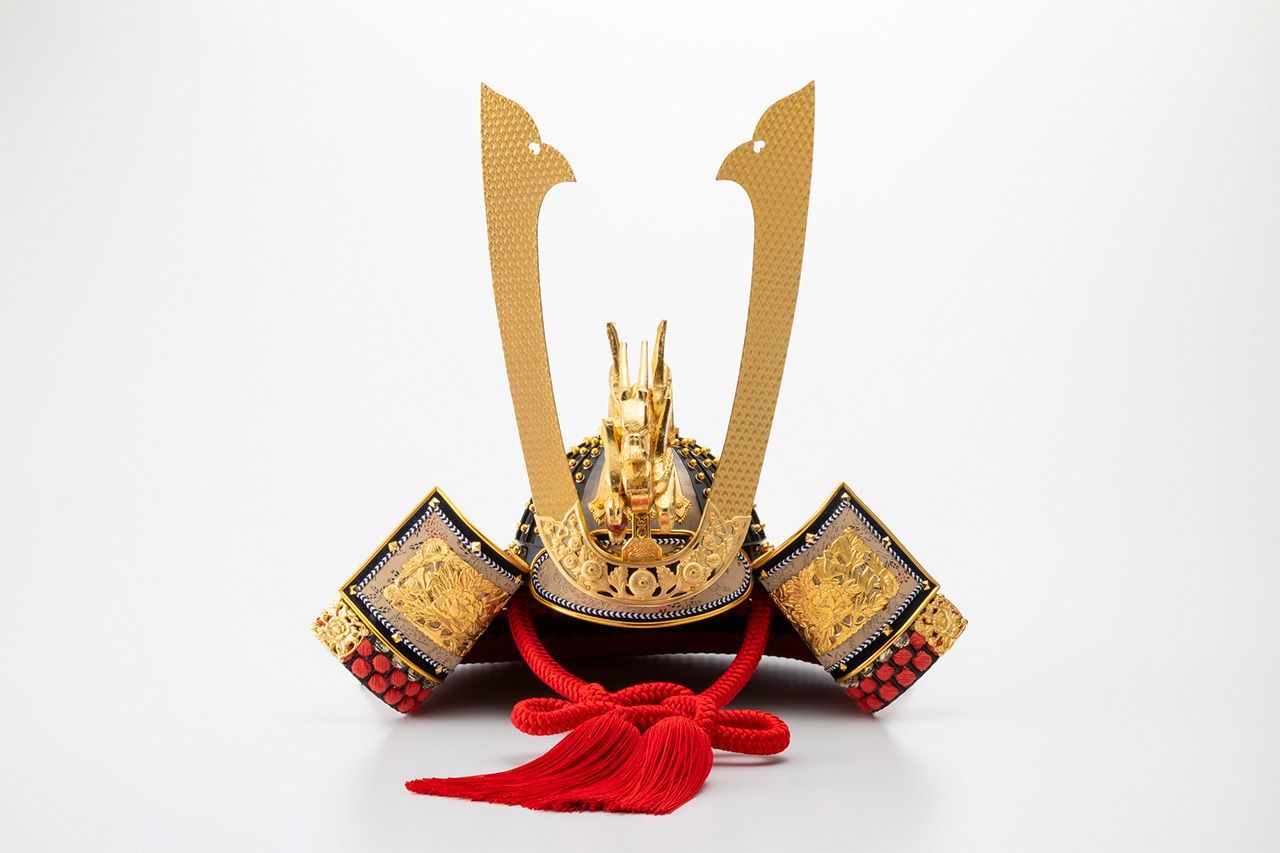
An ancient warrior helmet (kabuto), after which the rhinoceros beetle is named in Japanese. It has a kuwagata attached to the front. (© Pixta)
Uchimizu
Uchimizu refers to the sprinkling of water for relief from the heat. The practice is traditional wisdom dating back to the Edo period (1603–1868). Vaporization of water sprinkled at sundown lowers the nearby temperature, although it is more effective on soil than asphalt. In recent years it has gained attention as an environmentally friendly Japanese custom.
Uchiwa and Sensu Fans
Flapping uchiwa (flat fans) or sensu (folding fans) creates a cooling breeze to stave off the summer’s heat. They are considered an essential item at summer and bon odori festivals. Uchiwa are older, said to have been imported from China during the Asuka period (593–710). During the Heian period (794–1185), they were modified to create folding sensu, for more convenient carrying. Uchiwa are commonly carried when wearing thin, summer yukata robes, while sensu are more common with furisode (long-sleeved) or other formal kimono. In recent years, portable electric fans have become popular.

Uchiwa (left) and sensu. (© Pixta)
Osaka’s Tenjin Matsuri (July 25)
It is included in Japan’s top three festivals (the other two being Tokyo’s Kanda Festival and Kyoto’s Gion Festival). The festival, at Tenmangū, a shrine dedicated to Sugawara no Michizane, has been held for some 1,000 years, to pray for Osaka’s growth and prosperity, and for protection from evil. Portable shrines are mounted on boats, while others are paraded through the streets of central Osaka. Some 100 boats with portable shrines, enshrining various divine spirits, ply Osaka’s Ōkawa River. Special ceremonies are held on the boats, and fireworks are also launched for the gods.
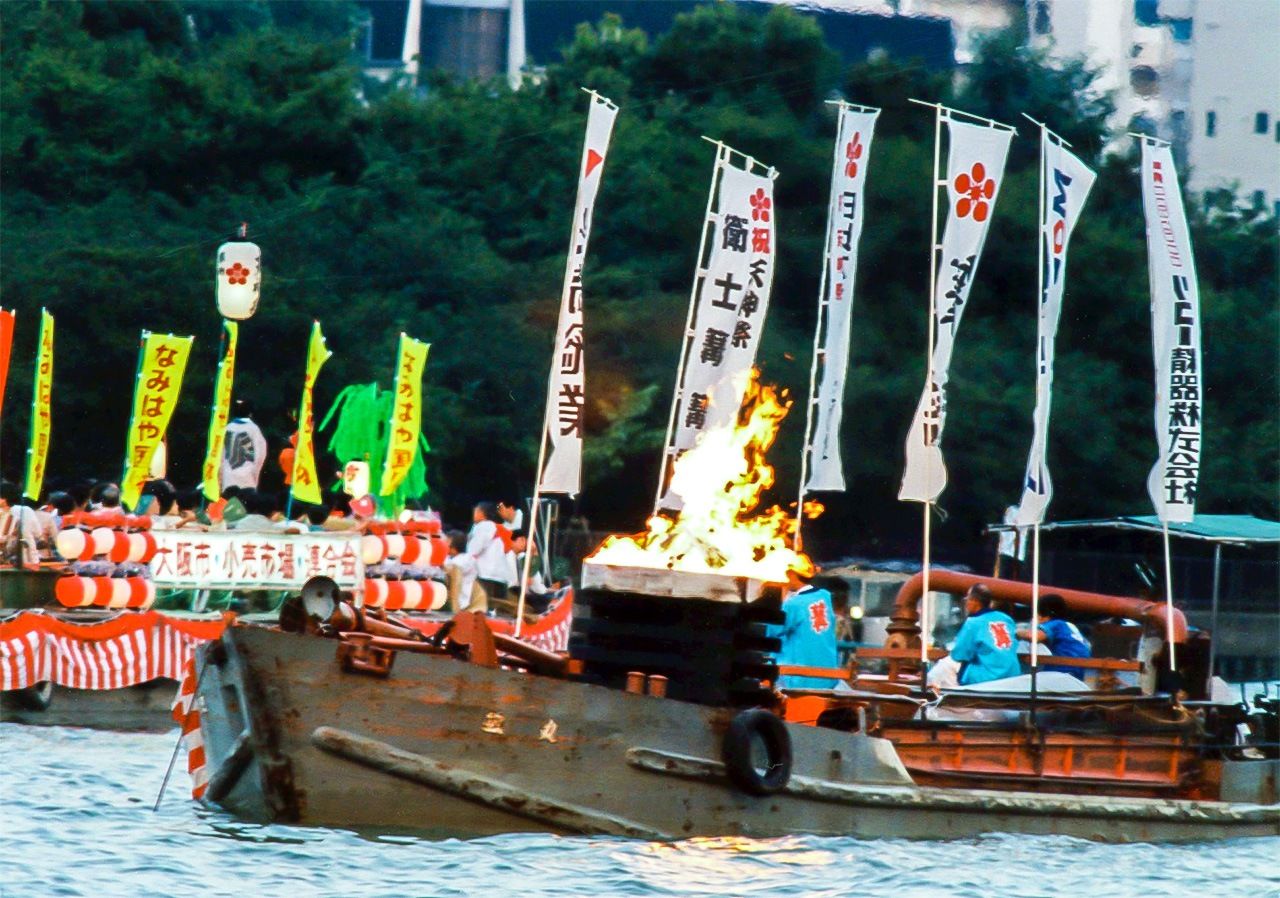
Floating shrines in the Tenjin Festival. (© Pixta)
The Three Great Festivals of Tōhoku
Hirosaki Neputa Festival (approximately August 1–7), and Nebuta Festival (August 2–7), Aomori Prefecture
Hirosaki Neputa Festival is designated as an important intangible folk property. The festival is said to have originated in the practice of floating sacred objects in water to act as scapegoats, carrying away impurity as a purification rite. The Aomori Nebuta Festival is held to ward off calamity and pray for good health.
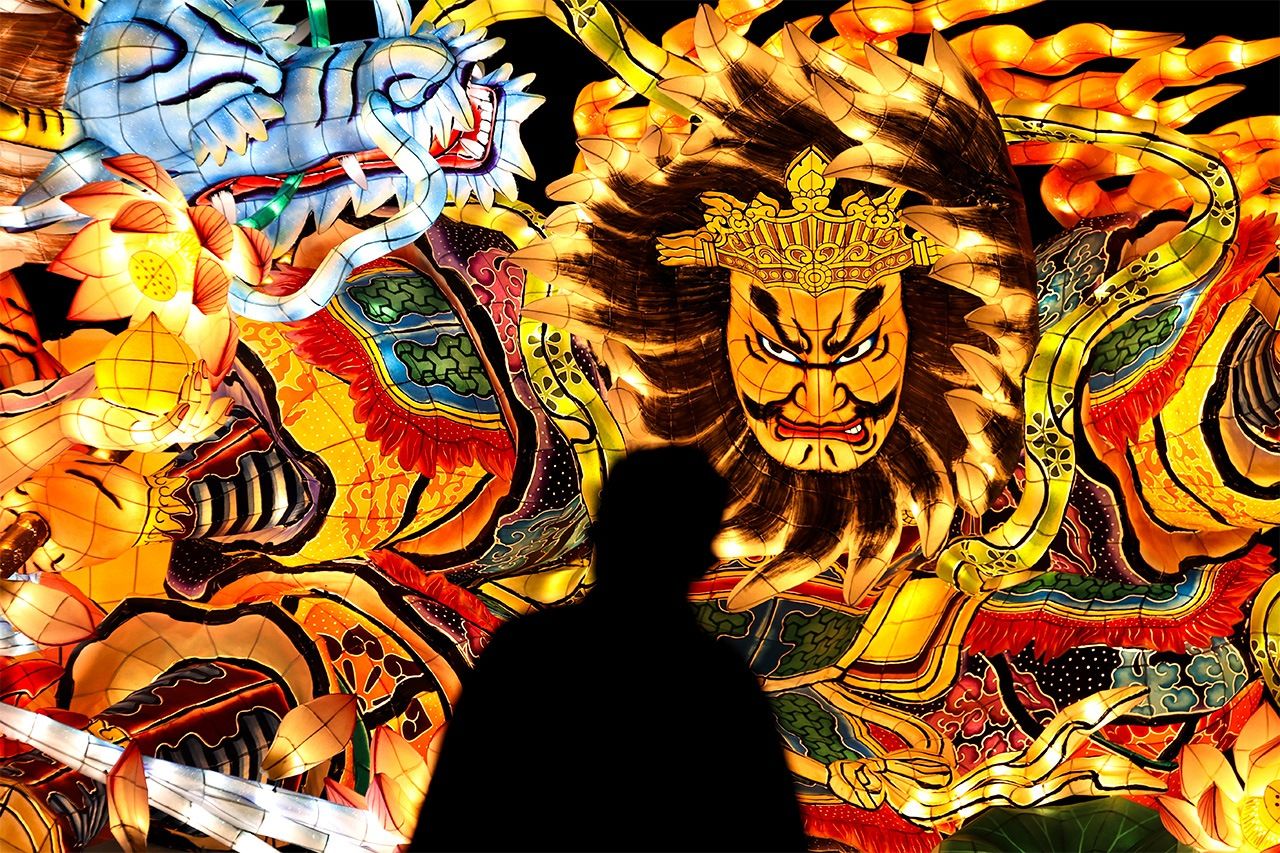
Aomori Nebuta Festival held for the first time in three years on August 2, 2022. (© Jiji)
Akita Kantō Festival (August 3–6)
The festival is staged as a purification rite and to pray for an abundant crop. Enormous constructions of 46 lanterns hung on poles are paraded by the participants, who carry them on the palms of their hands, their foreheads, shoulders, or hips. It an important intangible folk property.
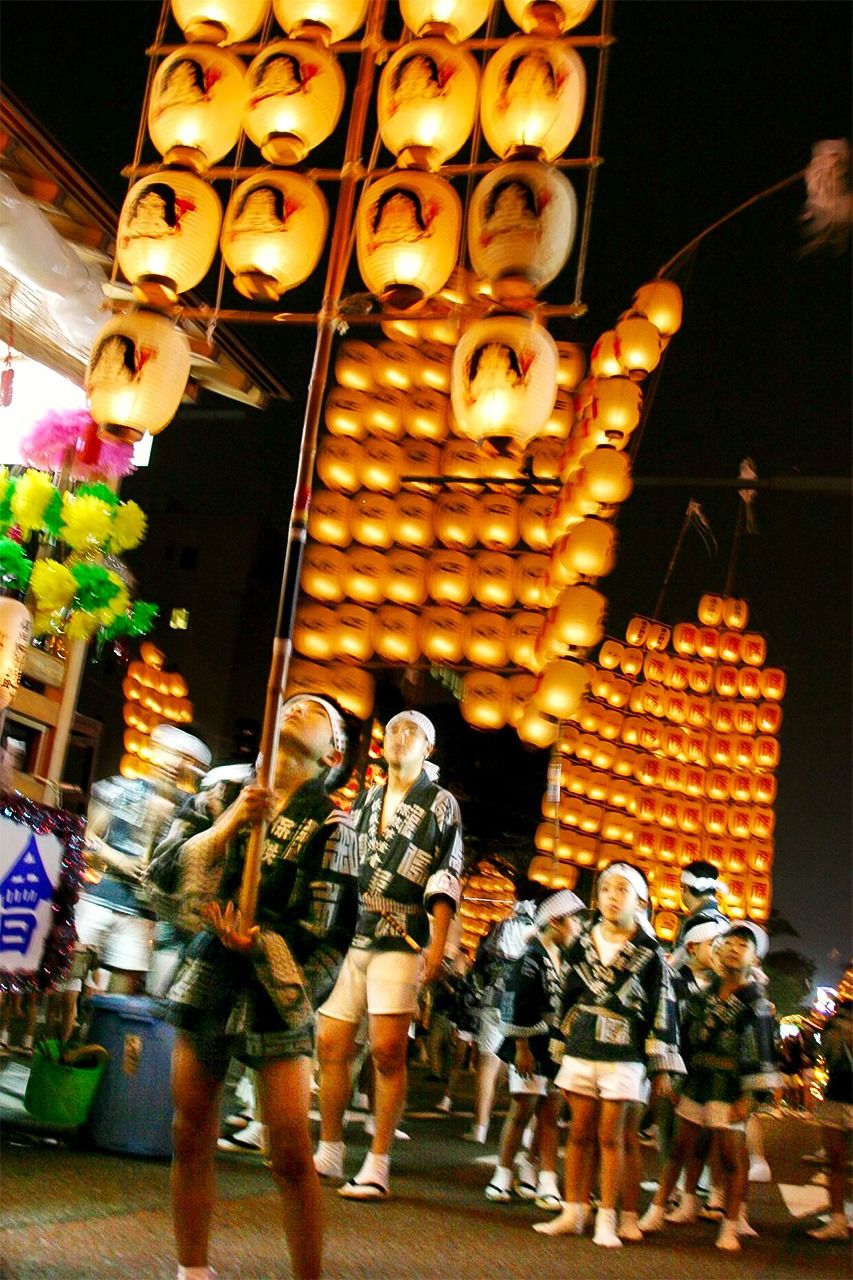
Akita Kantō Festival in Akita, Akita Prefecture. (©Jiji)
Sendai Tanabata Festival in Miyagi Prefecture (August 6–8)
The festival dates back to the time of Date Masamune, who built up the Sendai feudal domain. The festival is now held in August, adding one month to the lunar calendar.
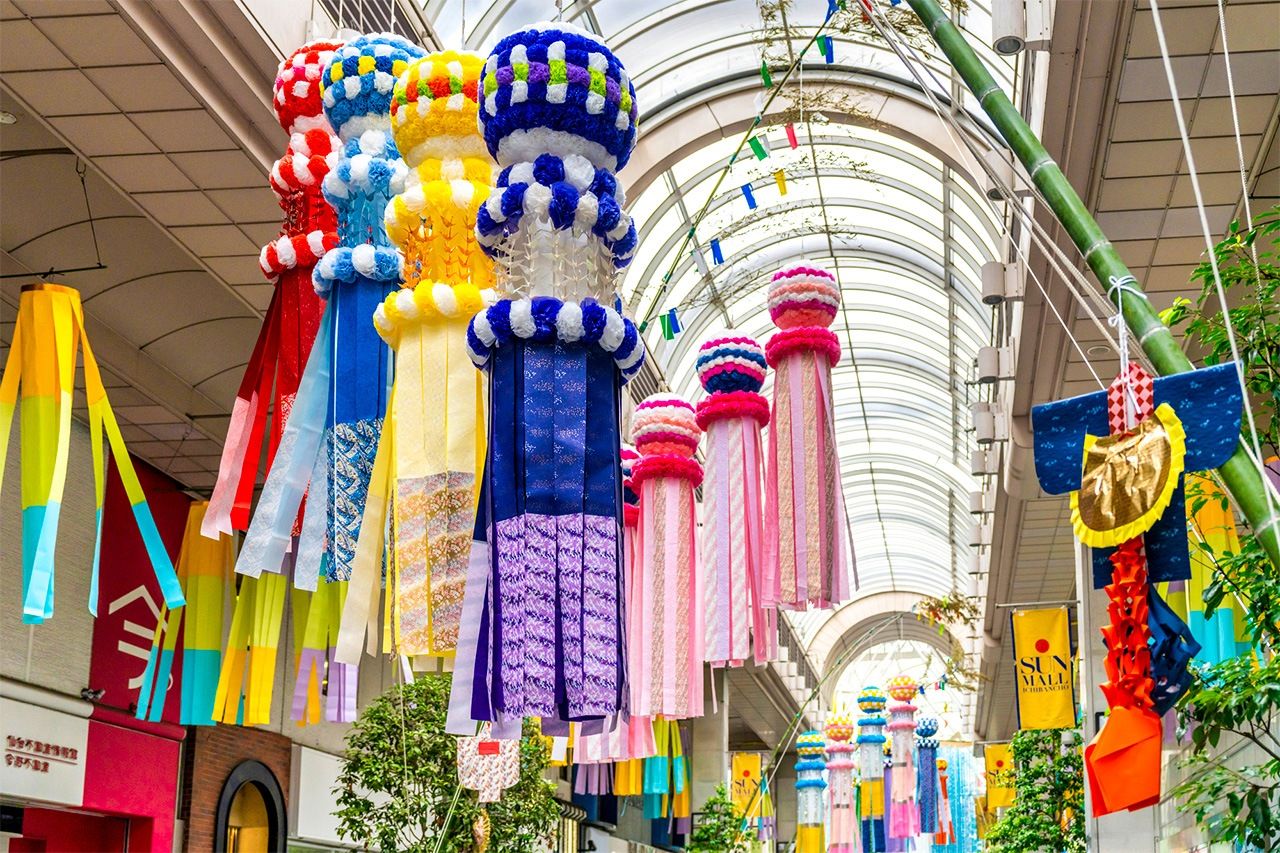
Sendai Tanabata Festival. (© Pixta)
Hiroshima Memorial Day (August 6)
The atomic bombing of Hiroshima, Japan, occurred on August 6, 1945, near the end of World War II. Now, Hiroshima Day is a day of remembrance for all who lost their lives through the bombing, and to pray for world peace. At the Peace Memorial Ceremony, held by the city of Hiroshima, the Peace Bell rings, and sirens sound across the city at 8:15 in the morning, the exact time when the bomb was dropped. For one minute, people pay tribute to the victims and pray for the realization of lasting world peace. Japan also marks the bombing of Nagasaki on August 9.
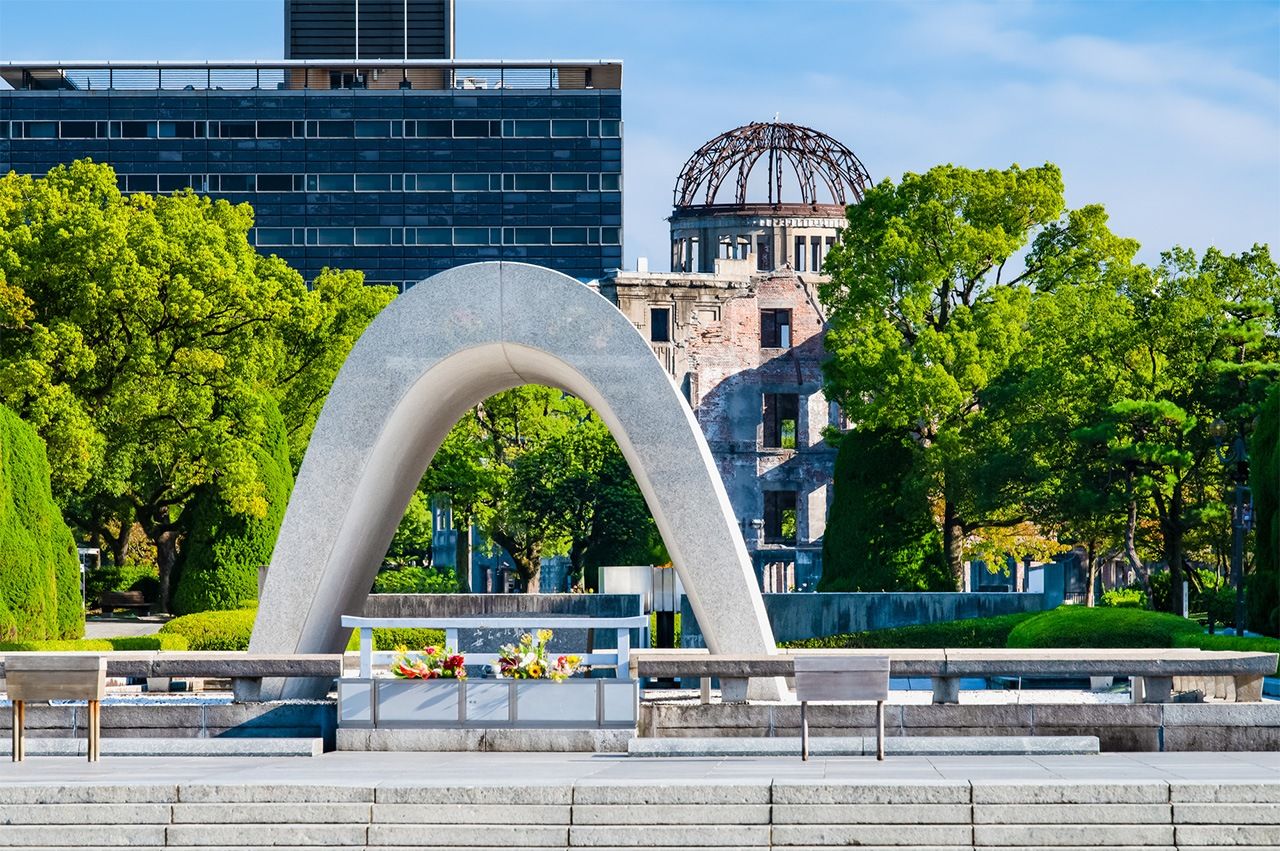
Hiroshima Peace Memorial Park. (© Pixta)
Semi Shigure (Cicada Shower)
The phenomenon where cicadas (semi) simultaneously burst into song is poetically described as a shigure, meaning a rain shower. The term is a seasonal word indicating summer in haiku and other writing. Only the males sing, as a mating call. Aburazemi and minminzemi are common in eastern Japan, while kumazemi are more common in western Japan. Each species has its own distinctive call.
Yūdachi
Late afternoon downpours, known as yūdachi, are common in summer. Recent years have seen an increase in sudden localized heavy downpours, known in Japan as “guerrilla rainstorms.” The terms are used distinctly by the Japan Meteorological Agency to describe what it considers as two different phenomena. The past few decades have seen a rise in disastrous heavy rains in Japan.
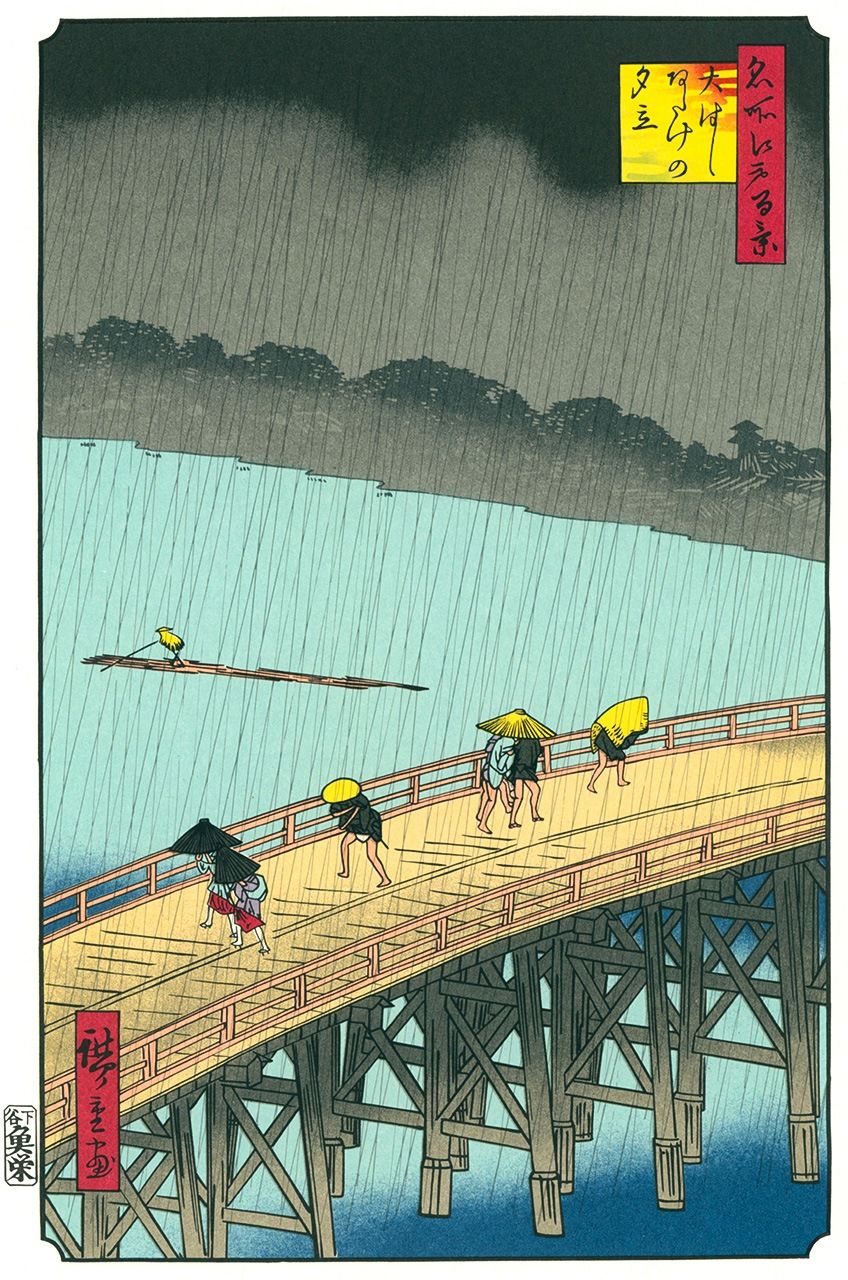
Ōhashi atake no yūdachi (Sudden Shower Over Shin-Ōhashi Bridge and Atake), 1857, by Utagawa Hiroshige, from One Hundred Famous Views of Edo.
Cooling River Decks in Kyoto (May 1–September 30)
Over the summer period, businesses on the west bank of the Kamo River in Kyoto put out wooden decks called nōryōyuka over the surface of the water as a cooling location for enjoying meals and drinks. This custom has been a regular summer sight in Kyoto since the Edo period.
Meanwhile, in the Kibune area in Sakyō Ward in the north of the city, there are similar decks, known locally as kawadoko, laid out just above the water. In the midsummer heat, this area is 10 degrees cooler than central Kyoto. The breeze and sound of water flowing against rocks add savor to the cuisine.
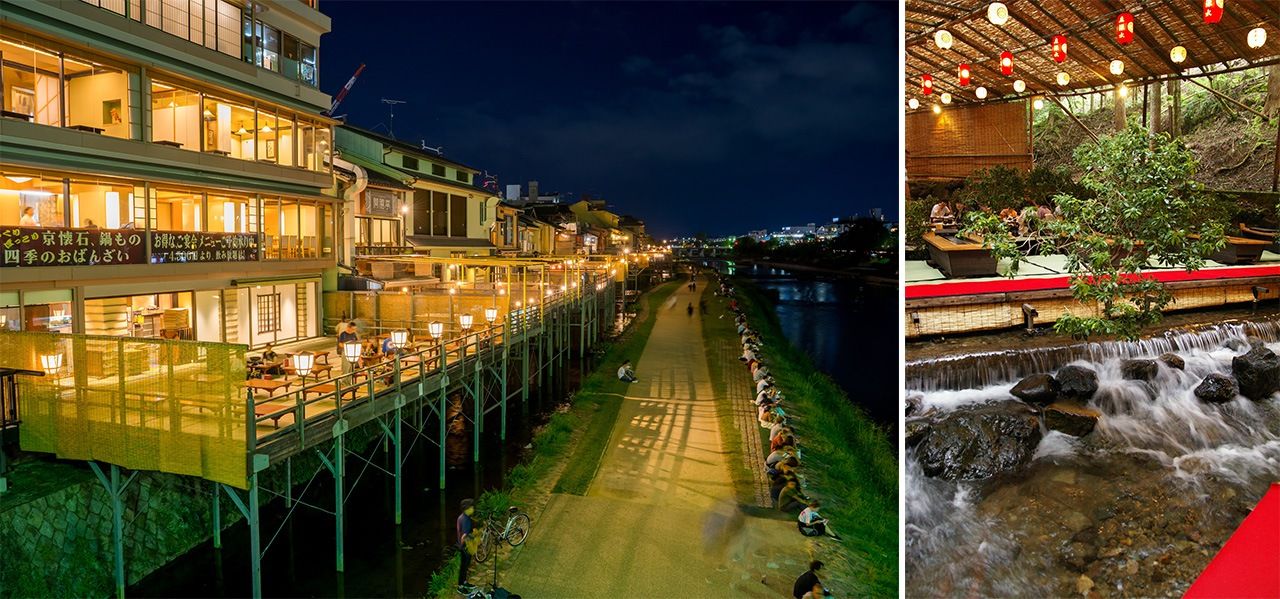
Nōryōyuka on the Kamo River (left) and kawadoko in Kibune. (© Pixta)
Gōya
Gōya (bitter melon) is rich in vitamin C, making it a perfect food to help avert heat fatigue. It has been eaten in Okinawa since ancient times. Gōya chanpurū is a delicious stir-fry dish from Okinawa made with gōya, tōfu, pork, and egg. The gourd can also be boiled and cooled, then served with bonito-flavored soy sauce, in a dish known as ohitashi, or it can be stuffed with minced meat.
In recent years, the vine has attracted attention as a way to save electricity. Thanks to its speedy growth and many large leaves, it is one of a number of plants used as a “green curtain,” strategically grown outside of windows to provide shade in summer. The increase in summer power shortages is spurring more people to grow such green curtains.
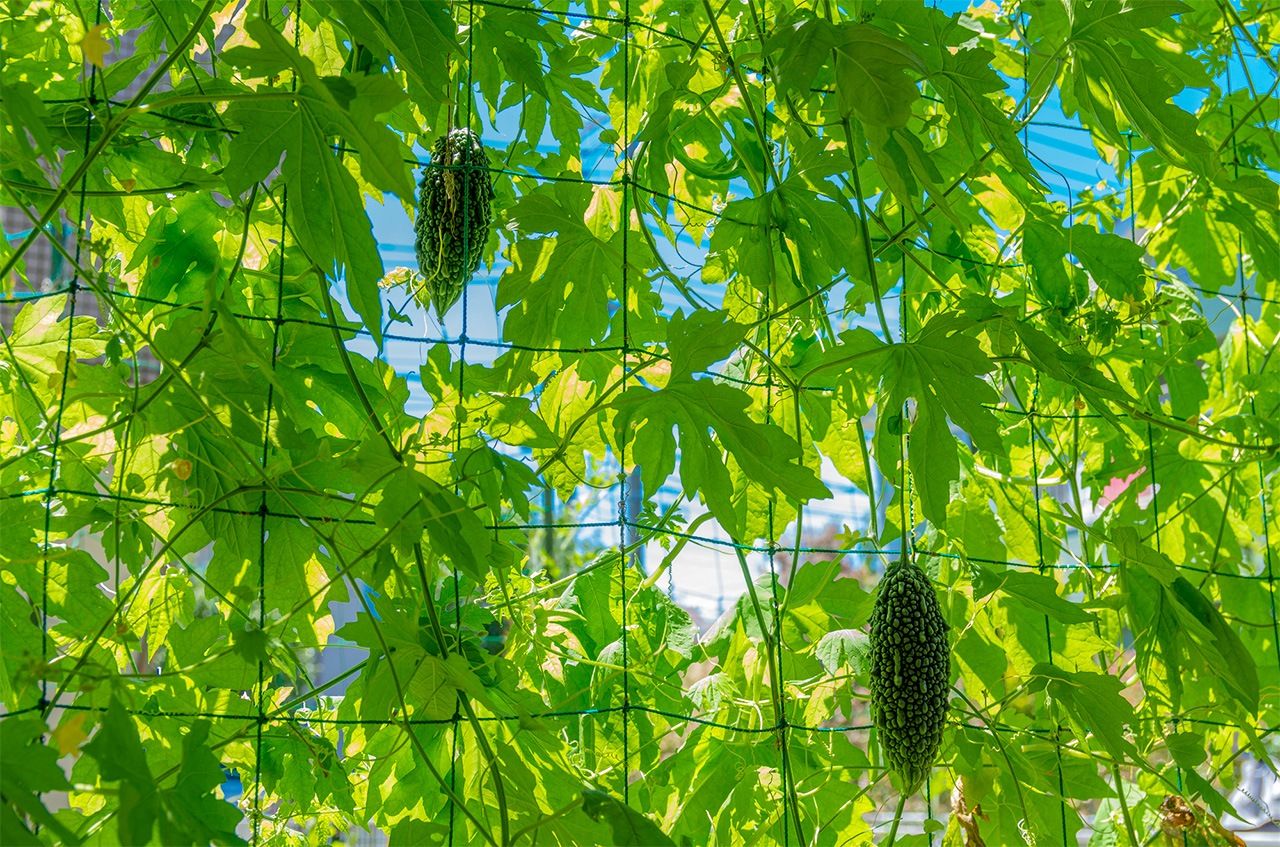
Gōya grown to create a “green curtain.” (© Pixta)
Tōgan (Winter Melon)
Tōgan is in season in summer despite the name meaning “winter melon.” The name refers to the fact that, if carefully stored in cool dark conditions, the vegetable can keep until winter. It is mentioned in Honzōwamyō, (Japanese Names for Medical Herbs), compiled in the Heian period (794–1185). Its refreshing taste and jade green color make it perfect for summer stews and soups.

Tōgan (left) and tōgan soup. (© Pixta)
Edamame
Like sushi and ramen, the popularity of edamame (green soybeans) means that people know the word outside Japan. Recently, native species are gaining greater attention, such as dadachamame from Tsuruoka in Yamagata Prefecture, Niigata chamame, and Tanba kurodaizu, black soybeans from the Tanba region, in modern-day Kyoto and Hyōgo Prefectures. These and other local varieties are a welcome addition to the dinner table in summer.
(Supervised by Inoue Shōei, calendar researcher and author, Shintō minister, and guest lecturer at Tōhoku Fukushi University. Banner photo: Field of sunflowers in Fujimi, Nagano Prefecture.)
